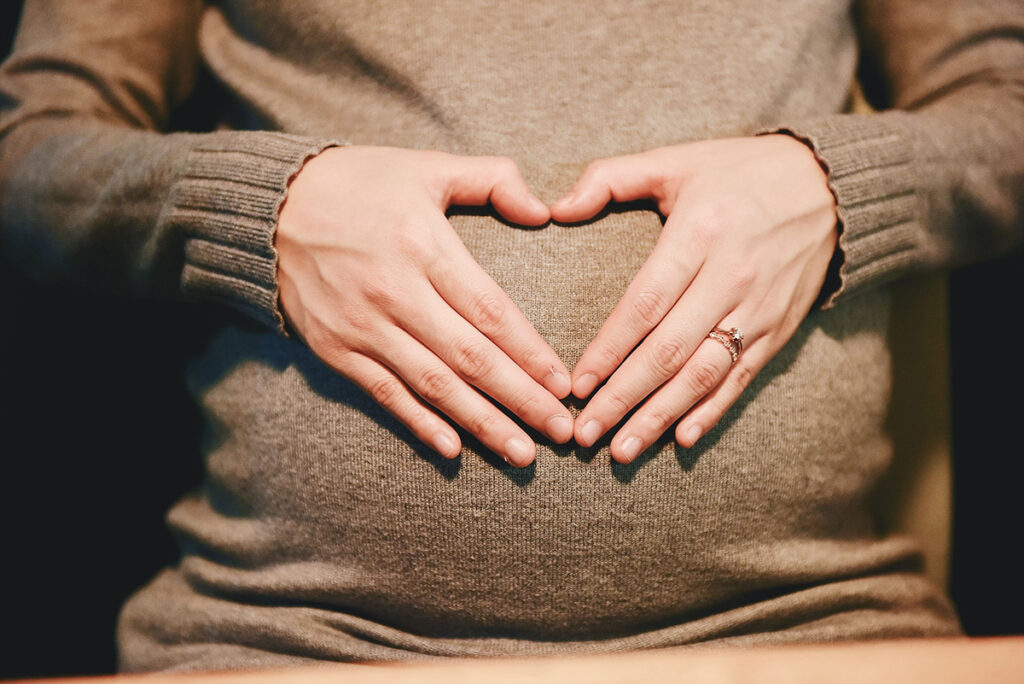Pregnant women are at higher risk of severe COVID-19, evidenced by epidemiological data on respiratory viral infections, including the Spanish flu, influenza A virus, and previous coronaviruses SARS-CoV and MERS. In influenza A, the mortality rate in pregnant women is 2.5 times higher than in the general population, and during the 2020-2021 coronavirus pandemic, mortality in pregnant women was 2.5-3 times higher.
Pregnant women are more susceptible to respiratory diseases because the work of the respiratory and immune systems changes during pregnancy:
- High estrogen levels and progesterone contribute to swelling of the mucous membrane of the upper respiratory tract. In addition, in the third trimester, due to the increase in the uterus’s size, the diaphragm’s mobility decreases, so breathing becomes more frequent and superficial.
- The immune system is rebuilt so that the mother’s body retains the genetically alien fetus but does not lose the ability to fight viruses and bacteria.
According to the Interim Guidelines of the Russian Ministry of Health, prevention of COVID-19 in pregnant women includes:
- Vaccination, which can be done 3-5 months before pregnancy with any vaccine, or after 22 weeks of gestation with GamCovidVac (Sputnik V);
- Wearing masks and other disinfection measures;
- Drug prophylaxis with intranasal interferon-α (IFN-α) in drops or spray.
Russian scientists have studied the effectiveness of COVID-19 prevention methods in pregnant women. The study involved 125 pregnant women with confirmed moderate and severe coronavirus infection and 175 healthy pregnant women. The gestational age is from 24 to 39 weeks. Both groups were recruited in September-November 2021.
In addition to regulated prevention methods, some pregnant women used umifenovir on their own and IFN-α in rectal suppositories, trusting the advice of relatives and advertising.
The Best Time for Vaccination is 22 Weeks after Pregnancy
Vaccination against SARS-CoV-2 3-5 months before and during pregnancy does not affect pregnancy and the fetus. When vaccinated before pregnancy, pregnancy can be planned as early as 28 days after introducing the first component of the vaccine.
In the diseased group, 12% of pregnant women were vaccinated, and in the healthy control group – 6.9%. In those who received the vaccine 3-5 months before pregnancy, the risk of getting sick in the II-III trimester was four times higher than in those vaccinated during pregnancy: 8.8 versus 2.3%. Women vaccinated during pregnancy were vaccinated early when they did not know they were pregnant. Among those who did not get COVID-19, only 1.1% received the vaccine early and 3.5% after 22 weeks of pregnancy.
An increase in the risk of COVID-19 in the II-III trimester when vaccinated 3-5 months before pregnancy is explained by a study by Argentine scientists: after the introduction of the Sputnik V vaccine, antibody titers began to decrease after 60 days, and after 180 days they remained only in 31% of those vaccinated.
Masks Are Effective Regularly and Frequently Changing
Ill pregnant women used face masks 10% more often, but also more often violated the rules for their use: they were worn irregularly and rarely changed, five times increased the risk of developing COVID-19.
The most Potent Intranasal Interferon-α is when Used Systematically
Among the sick, intranasal IFN-α was used by 76%, and among those who did not get sick – 84.6%. Some pregnant women used IFN-α during the day after contact with the patient, three drops or spray doses in each nasal passage 5-6 times a day (single dose – 3000 IU, daily dose – 15,000-18,000 IU), with repeated contact courses. The rest of the pregnant women used IFN-α systematically – once in the morning in a single dose with an interval of 24-48 hours.
Pregnant women who used interferon only after contact with the patient remained at a high risk of COVID-19: 56.8 vs 10.3%. However, those who systematically used interferon-alpha had a significantly lower risk of contracting COVID-19: 19.2% versus 74.3%.
Most sick pregnant women who used IFN-α became infected by family members, at work, and in public places, not assuming they had been in contact with the patient, so they did not promptly use emergency drug prophylaxis with interferon.
Umifenovir Still Keeps the Risk of Getting COVID-19
Umifenovir was used by 14.4% of pregnant women with COVID-19 and 16% of those who did not. Umifenovir did not reduce the risk of getting sick either with post-exposure use (200 mg 1 per day for 10-14 days) or prophylactic use (200 mg 2 times a week for three weeks).
Rectal Suppositories of Interferon-Alpha Increase The Risk of Contracting COVID-19 After Contact With a Patient
IFN-α rectal suppositories are not a regulated method of preventing coronavirus.
In the diseased group, 32% used IFN-α rectal suppositories, and in the healthy control group – 15.4%. The introduction of the drug at 500,000 IU 2 times a day was carried out more often within 1-3 days after contact with the patient; less usually – 5 days. Patients who used IFN-α as rectal suppositories had an increased risk of COVID-19. The risk increased three times with short-term drug administration after contact with the patient. The increased risk could be associated with work in the social sphere, neglect of the mask regime, and other factors.
Conclusion
Interferon-alpha-2b preparations effectively prevent and treat acute respiratory viral infections, including in pregnant women. The systematic use of intranasal IFN-alpha significantly reduces the risk of COVID-19 in pregnant women. However, post-exposure administration of IFN-alpha does not affect the risk of disease. Umifenovir and IFN-α in the form of rectal suppositories are also not effective in protecting against coronavirus.
Useful article, necessary information? Share it!
Someone will also find it useful and necessary:
Reference
Assessment of the effectiveness of COVID-19 preventive measures in pregnant women



